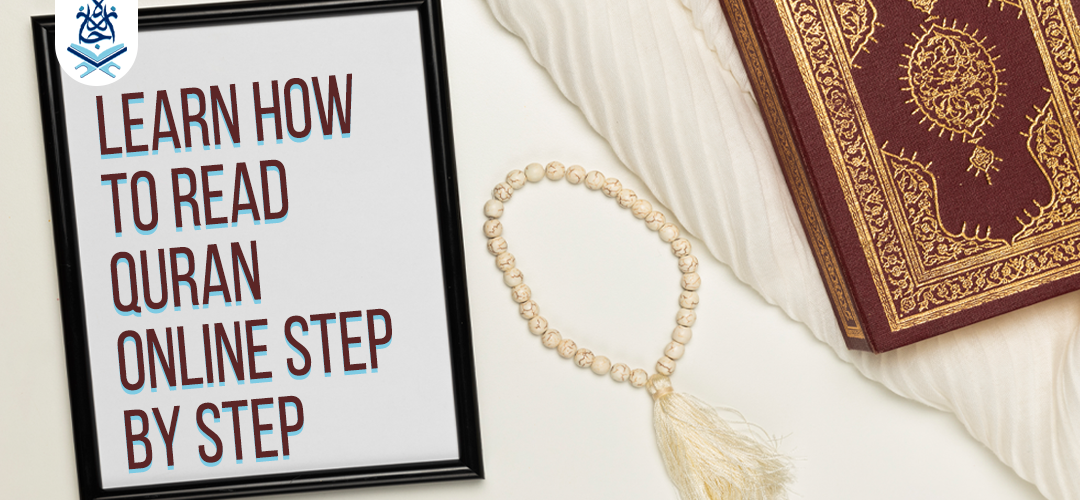Blog
Learn how to read Quran online STEP BY STEP

Learn how to read Quran online STEP BY STEP | Are you a Muslim living in a non-Arabic-speaking country who needs to memorize how to examine the Quran online for yourself or your children? Have you looked on the web for a clear way how to think about the Quran for apprentices but come up empty-handed? Do you think it’s troublesome to recount the Quran easily on the off chance that Arabic isn’t your, to begin with, dialect? On the off chance that your reply is yes to any of the preceding questions, then you’re within the right put. Examine this article to discover what you need.
Learn how to read Quran online
Learning to ponder the Quran online may be a useful undertaking that each Muslim should undertake regularly. It educates him all he ought to know about almost everything. As well as bringing him closer to Allah All-powerful and serving as proof of his great acts on the Day of Judgment. The Quran assumes to be memorized by both Muslim men and women. Early in life, Muslims start memorizing the Quran. Muslims start memorizing the Quran in their early years. Constantly interfacing with the Quran through its ponder draws Muslims closer to the Maker, gives colossal benefit in this life, and will be a source of gigantic remuneration within the following.
Muhammed (PBUH), the prophet, said:
Read the Qur’an, for it will come as an intercessor for its reciters on the Day of Resurrection.
[Riyad as-Salihin 991] Hadith
read more about/ Quran classes online
Examining the Quran is so fundamental for each Muslim Throughout the world.
Steps for learning how to read Quran online
Ijaazah Classes’ online Quran instructors have made the step-by-step approach to learning Quran for beginners:
Our systematic approach to learning to read Quran
We have satisfactorily created the technique for kids and grown-ups to help you in learning to examine the Quran. The arrangement is divided into two parts. It assists isolates into two categories: children and adults. Beginners will be instructed by Qaida Noorania or Noor Al-Bayan.
Learn how to read Quran online – P 1
Begins with the essentials of the Quran: The understudies will learn how to articulate the letter set correctly. Harakat (movements), Madd letters, Sukoon, Tanween, and Shaddah— Diverse letter-joining rules.
Learn how to read Quran online – P 2
Understudies will be instructed on how to examine the Quran in Tajweed. By following the rules, you’ll be able to study Surahs. Revise and assess recitation. Note: There will be two examinations taken after each segment of the course, followed by the last exam. This can be to guarantee that each student’s perusing is familiar.
Our prepared teachers
With the assistance of our prepared instructors, learn how to study the Quran online. For amateurs, learning the Quran is complex and requires the help of a gifted tutor. Many of our Quran instructors have completed certificates and courses in educating aptitudes and techniques from different institutes. Trained to educate online additionally has helped hundreds of non-Arabs in learning to study the Quran online. We enlisted instructors who are local English speakers and can display the subject professionally.
Our Quran educators have created strategies and methods for perusing and learning the Quran in a way that creates learning fun, straightforward, and exciting. They utilize introductions and infographics to streamline our kids’ review of their Quranic Arabic teachings. Our mentors instruct with the most noteworthy commitment and great eagerness to help understudies accomplish their Quran think-about destinations.
Our course’s outstanding features
With our course’s exceptional highlights, you’ll learn to examine the Quran. There are particular recognizing characteristics of this “Learn how to study Quran online” course that set it apart.
Local Middle Eastern instructors will instruct you on how to examine the Quran in Arabic accurately

Muslim understudies get to the foremost critical directions in workforce available. Our Quran guides are competent in making lesson plans for Quranic instruction. They arrange ahead of time for courses and counsel with administrators for almost their Quran courses online to create the foremost of the time designated.
We are here 24 hours a day, seven days a week. Your time is valuable to us.
As a result, we permit our understudies to choose the ideal time to memorize how to study the Quran. Our educators are prepared to educate at your comfort 24 hours a day, seven days a week. Our flexible planning makes it simple for amateurs to memorize to present the Quran.
There are FREE trial lessons available
We offer two free trial lessons where you’ll engage with the professors. And examine the timetable to memorize how to read the Quran correctly. After taking advantage of the free lesson, we are beyond any doubt merely will need to select with us.
Reviews about learn how to read Quran online course
The course on learning to examine the Quran assesses, and comments were given. You can’t learn to peruse the Quran without rectifying your mistakes. As a result, the most excellent Online Quran guide keeps up an evaluation shape on hand, which is filled out frequently conjointly to help in centering on each student’s ranges for progress. Quran guides for children give prompt criticism to guardians and keep them educated approximately their child’s Quranic ponder.
Encouragement and motivation
Support conjointly inspiration to memorize how to peruse Quran online fluently. One of our objectives is to energize all Muslims around the world to peruse the Quran utilizing Tajweed as Prophet Muhammad did. With that objective in intellect, we spur to supply a spurring air for all understudies.

